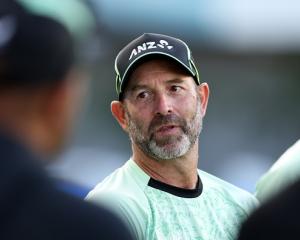Overhand bowling, six-ball overs, coloured clothing, reverse sweeps, DRS - cricket sure has changed. What's next - pink balls and day-night tests? Surely not. Sports writer Adrian Seconi takes a light-hearted look at how far the game has come.
Dark Ages
No-one knows for sure but cricket probably got its start during this time. By the Tudor period, it had evolved into something far more civilised that we might even recognise as being vaguely pompous.
1598
Cricket makes it into the lexicon with its appearance in an Italian-English dictionary. It was right there between retreat and colonisation.
1744
The London Club issues the first known Laws of Cricket, formalising the pitch as ''22 yards'' long.
1771
Bowlers conspire to limit the width of a bat to 108mm.
1774
Bowlers conspire to introduce the LBW law. There is no evidence suggesting this was to prevent Americans from ever understanding the game.
1836
Someone figures out batting pads might be a good idea.
Wicketkeepers catch on fast and begin wearing gloves just 14 years later.
1858
Heathfield Stephenson was presented with a hat for taking three consecutive wickets. The feat becomes known as a hat-trick but it really does sound like a lousy gift. What was wrong with cash, as was the custom at the time?1864Overhand bowling is authorised by the MCC. Australians still claim they never received the memo.
1910
Batsmen conspire to shorten the length of a six. The ball no longer needs to be hit out of the ground, just over the boundary.
1930
Watch out world. New Zealand plays its first test.
1931
Stumps made higher and wider by an inch. Does not sound like much but New Zealand is slow to adjust. It takes 26 long years before the country records its first test victory.
1948
Five-day tests are introduced in England. It just prolongs the home nation's pain.
1957
Declarations can be made at any time. Prior to that, it is understood forms had to be filled out in triplicate.
1960s
First the sexual revolution takes hold and then limited-overs cricket gets a foothold in England with the establishment of the Gillette Cup in 1963 and the Sunday League in 1969. Damnation followed.
1971
The first one-day international is staged and four years later the West Indies win the first World Cup.
1977
Kerry Packer establishes a breakaway professional league called World Series Cricket. He pays them money, makes them wear pyjamas and some of the games are played at night. Crazy. It will never take off.
1978
Someone figures out helmets might be a good idea. Dennis Amiss puts his thinking cap on and opts for a motorcycle helmet. Poms, eh!
1980
Australia does away with the eight-ball over on the account most locals have just the six fingers on each hand.
1981
You know what took place. It was all a bit underhanded, really. And clearly the aforementioned memo still had not arrived.
1990
Moustaches go out of fashion when Sir Richard Hadlee retires. David Warner remains defiant despite all advice to the contrary.
1992
The Duckworth-Lewis method was devised by two British statisticians. It takes more time to explain than it did to crack Enigma.
1996
Martin Crowe invents Cricket Max. It fizzles out after six seasons but arguably twenty20 owes much to Crowe's inventive concept. The four stumps never caught on, though.
2003
The first official twenty20 games are played between English county sides. The format goes gangbusters and eventually leads to the prohibition of the forward defensive.
2009
The Umpire Decision Review System (DRS) makes its debut in the test between New Zealand and Pakistan at the University Oval. All human drama is put on pause while someone in the truck out the back fumbles around with a few buttons.
Today
Day-night test cricket is introduced for the third test between New Zealand and Australia in Adelaide. The game is played with a pink ball. Some patriot turns out the lights with Australia struggling at 15 for eight.










